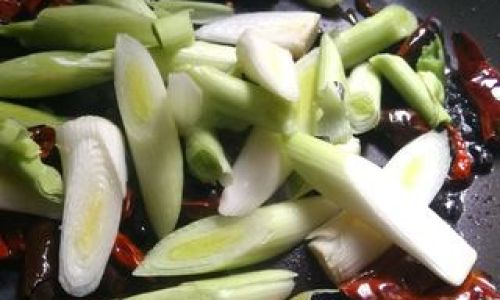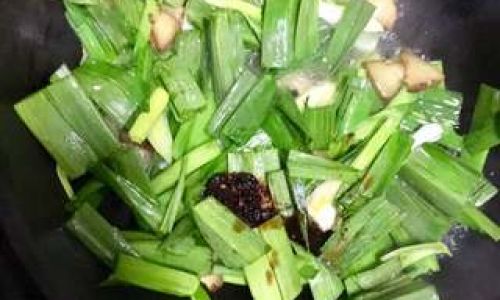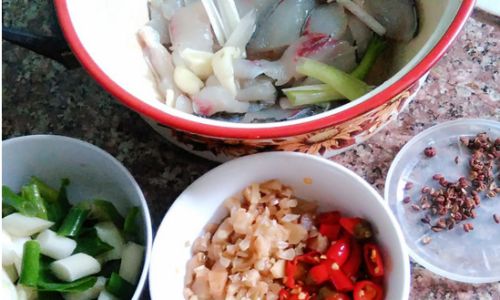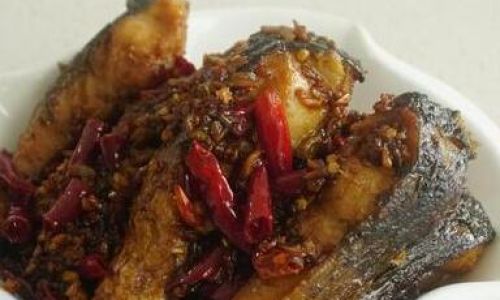Introduction
Stir-frying, a cornerstone of Asian culinary traditions, is a technique that transforms simple ingredients into aromatic, flavorful dishes. Among the many ingredients elevated by this method, garlic stands out as a humble yet mighty component. Stir-fried garlic, with its caramelized edges and pungent aroma, serves as a foundation for countless recipes, from savory stir-fries to robust sauces. This article delves into the intricacies of preparing stir-fried garlic, exploring its history, techniques, and versatile applications. Whether you are a novice cook or a seasoned home chef, mastering this skill will unlock a world of depth and complexity in your meals.
The Role of Garlic in Global Cuisines
Garlic (Allium sativum) has been cultivated for over 5,000 years, with origins tracing back to Central Asia. Its ability to thrive in diverse climates and its potent flavor profile made it a staple in ancient civilizations, from Egypt to Rome. Today, garlic is indispensable in kitchens worldwide, prized for its ability to enhance umami, balance flavors, and add a distinctive kick to dishes. In stir-frying, garlic’s role is twofold: it acts as a flavor base when sautéed in oil and as a standalone ingredient when stir-fried to crispy perfection.

Understanding the Stir-Frying Technique
Stir-frying involves cooking ingredients quickly over high heat in a minimal amount of oil, typically in a wok or a large skillet. The goal is to retain the ingredients’ natural colors, textures, and nutrients while developing a layer of caramelization known as wok hei (breath of the wok). Achieving this requires precision, as overcooking can lead to bitterness, while undercooking leaves flavors underdeveloped.
Ingredients and Tools
To master stir-fried garlic, gather the following:
- Fresh garlic cloves: Opt for plump, firm bulbs with tight, unblemished skin.
- Cooking oil: Neutral oils like peanut, canola, or vegetable oil work best, as they withstand high heat without smoking.
- Optional additions: Red pepper flakes, ginger, scallions, or soy sauce for enhanced flavor.
- Tools: A carbon-steel wok (ideal for heat retention) or a large stainless-steel skillet, a spatula, and a cutting board.
Step-by-Step Preparation
Preparing the Garlic
- Peeling: Separate the cloves from the bulb. To peel easily, place cloves under the flat side of a knife and press gently until the skin cracks. Alternatively, blanch cloves in boiling water for 10 seconds to loosen the skin.
- Slicing: For stir-frying, garlic can be minced, thinly sliced, or crushed. The choice affects texture and flavor release:
- Minced garlic: Finely chopped for quick, intense flavor.
- Sliced garlic: Thin rounds for a crispy texture.
- Crushed garlic: Smashed with a knife blade for a paste-like consistency, ideal for infusing oil.
Heating the Wok
- Place the wok over high heat for 2–3 minutes until a drop of water evaporates instantly.
- Add 2–3 tablespoons of oil, swirling to coat the surface. The oil should shimmer but not smoke.
Cooking the Garlic
-
Method 1: Infusing Oil (for aromatic bases)
- Add minced or crushed garlic to the hot oil.
- Stir continuously for 15–20 seconds until fragrant but not browned.
- Immediately add other ingredients (vegetables, meat, etc.) to prevent burning.
-
Method 2: Crispy Garlic Chips (as a garnish or snack)
- Slice garlic thinly and pat dry to prevent splattering.
- Fry in 350°F (175°C) oil until golden brown (1–2 minutes).
- Drain on paper towels and season lightly with salt.
Balancing Flavors
- Sweetness: A pinch of sugar or a splash of mirin can mellow garlic’s sharpness.
- Heat: Red pepper flakes or fresh chili add complexity.
- Acidity: A squeeze of lemon or rice vinegar brightens the dish.
Avoiding Common Pitfalls

- Burning: Garlic burns easily; monitor heat and stir constantly.
- Overcrowding: Cook in batches to prevent steaming, which softens texture.
- Using Stale Garlic: Old garlic develops a bitter aftertaste; always use fresh bulbs.
Culinary Applications of Stir-Fried Garlic
Stir-fried garlic’s versatility shines in various dishes:
- Stir-Fried Vegetables: Toss garlic-infused oil with broccoli, snap peas, or bok choy for a quick side.
- Noodle Dishes: Combine with soy sauce, oyster sauce, and noodles for a classic chow mein.
- Marinades: Blend with herbs and oil to tenderize meats or tofu.
- Dips and Sauces: Purée with olive oil, lemon, and herbs for a creamy aioli.
Health Benefits of Garlic
Beyond its culinary appeal, garlic offers numerous health benefits:
- Antioxidant Properties: Rich in allicin, a compound linked to reduced inflammation.
- Heart Health: May lower cholesterol and blood pressure.
- Immune Support: Historically used to combat infections.
Regional Variations
- Chinese Cuisine: Garlic is paired with ginger and scallions in the “holy trinity” of Chinese cooking.
- Italian Dishes: Browned garlic cloves are tossed with olive oil and pasta (aglio e olio).
- Korean Cuisine: Roasted garlic is crushed into chili pastes like gochujang.
Advanced Techniques
- Black Garlic: Fermented garlic develops a sweet, molasses-like flavor. Stir-fry briefly to enhance its umami notes.
- Garlic Confit: Slow-cook garlic in oil until soft and golden; use the oil for dressing or the cloves as a spread.
Troubleshooting Guide
- Bitter Taste: Reduce heat or shorten cooking time.
- Soggy Texture: Ensure garlic is dry before frying and use sufficient oil.
- Lack of Flavor: Use more garlic or enhance with complementary spices.
Pairing Suggestions
- Proteins: Chicken, shrimp, or beef marinated in garlic-soy sauce.
- Grains: Fried rice or quinoa tossed with garlic chips.
- Beverages: Pair spicy garlic dishes with a crisp lager or a light-bodied white wine.
Conclusion
Stir-fried garlic is more than a cooking technique—it is a gateway to unlocking layers of flavor in your kitchen. By understanding the nuances of heat, texture, and balance, you can elevate everyday meals into culinary masterpieces. Whether you prefer the subtle warmth of garlic-infused oil or the crunch of golden chips, this ingredient rewards experimentation. So grab your wok, sharpen your knife, and let the sizzle of garlic guide you to new heights of gastronomic delight.
Final Tip: Practice makes perfect. Start with simple recipes and gradually incorporate stir-fried garlic into complex dishes. Over time, you’ll develop an intuition for when the garlic is perfectly caramelized—that moment when the kitchen fills with its irresistible aroma, signaling a dish well on its way to greatness.





0 comments